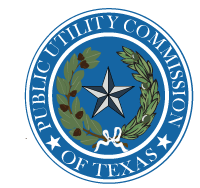Created by the Public Utility Regulatory Act of 1975, the PUC has played instrumental roles in momentous changes to the state’s electric energy market, including the deregulation of wholesale and retail electricity in 1995 and 2001, respectively
________________________________________________
 The Public Utility Commission of Texas, the state’s principal regulator of electricity and water utilities, has celebrated its 50th anniversary.
The Public Utility Commission of Texas, the state’s principal regulator of electricity and water utilities, has celebrated its 50th anniversary.
Created by the Public Utility Regulatory Act of 1975, the PUC has played instrumental roles in momentous changes to the state’s electric energy market, including the deregulation of wholesale and retail electricity in 1995 and 2001, respectively. The PUC also has exercised responsibility for the oversight of telephone utilities prior to the deregulation of that industry. More recently the PUC has taken responsibility for the oversight of water and sewer utilities.
To mark its golden anniversary, the PUC has launched an online exhibit of the agency’s history, which can be found here. The exhibit includes an illustrated timeline, curated photos, historical documents, and on-camera interviews with past and present chairmen.
Notable agency milestones include:
- The adoption of the Public Regulatory Act, passed by the 65th Texas Legislature and signed into law by then-Gov. Dolph Briscoe. That law created the PUC.
- The swearing in of the agency’s first three commissioners on Sept. 2, 1975. Those commissioners were Garrett Morris, George Cowden and Alan Erwin.
- The agency’s first rate case, filed in 1976 by Southwestern Bell Telephone
- The implementation of Senate Bill 7, the law that deregulated the state’s retail electric market. The Texas Legislature adopted SB 7 in 1999, and the retail electric market opened two years later.
- The expansion of the PUC from a three-person agency to five in 2022, after the adoption of SB 3 the previous year.
- The agency’s increased focus on reliability and resiliency in the aftermath of statewide outages in 2021 and in anticipation of massive growth in power demand expected this decade.
Decades of Attempts
The agency itself came into existence only after decades of attempts by lawmakers to regulate public utility companies. According to an article by Tracy Anders Greenlee found in the online Handbook of Texas, lawmakers in 1905, 1907, 1913, and 1937 adopted measures to increase the ability of local authorities to exercise authority over public utilities. These early efforts, however, granted only limited powers to city officials, according to Greenlee. Some lawmakers also proposed measures to place utilities under the authority of already existing state agencies, such as the Railroad Commission. However, only gas utilities were placed under the purview of that agency with the adoption of the Gas Utilities Law of 1921. Several legislators and a governor over the years also called for a state board to oversee utilities, with unsuccessful measures proposed in 1913, 1939, 1946 and 1957. However, it was not until they were spurred into action by growing public outrage over soaring electric bills and a well-publicized telephone company scandal during the early 1970s that the Texas Legislature finally managed to create the PUC with the adoption of the Public Utility Regulatory Act.
Today, the agency regulates power generators, retail electric providers, and transmission and distribution companies, and oversees the Electric Reliability Council of Texas, which manages the Texas electric grid delivering power to 27 million people.
The PUC also regulates rates and service reliability for thousands of privately-owned water and wastewater utilities across the state. It maintains some slight oversight responsibilities for telecommunications matters, although that industry has largely been deregulated. Examples of the PUC’s telecommunications responsibilities include administration of the Texas Universal Service Fund, which is intended to assist Texas residents in rural and underserved areas to obtain telecommunications services.
To learn more, visit https://www.puc.texas.gov.

